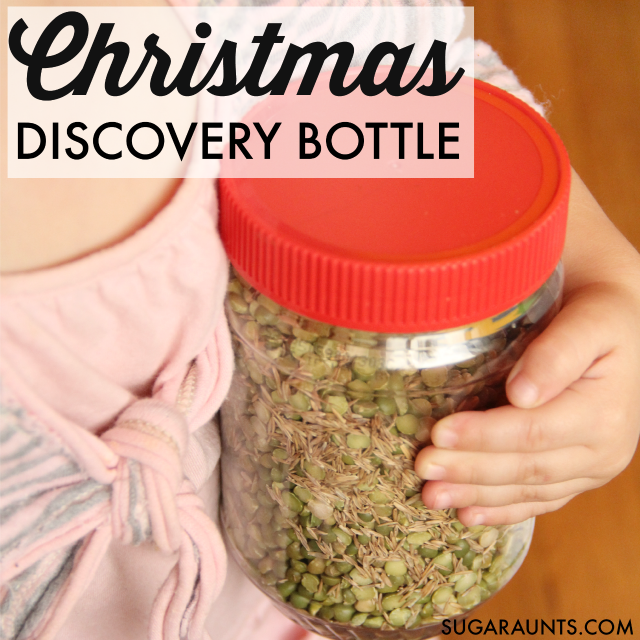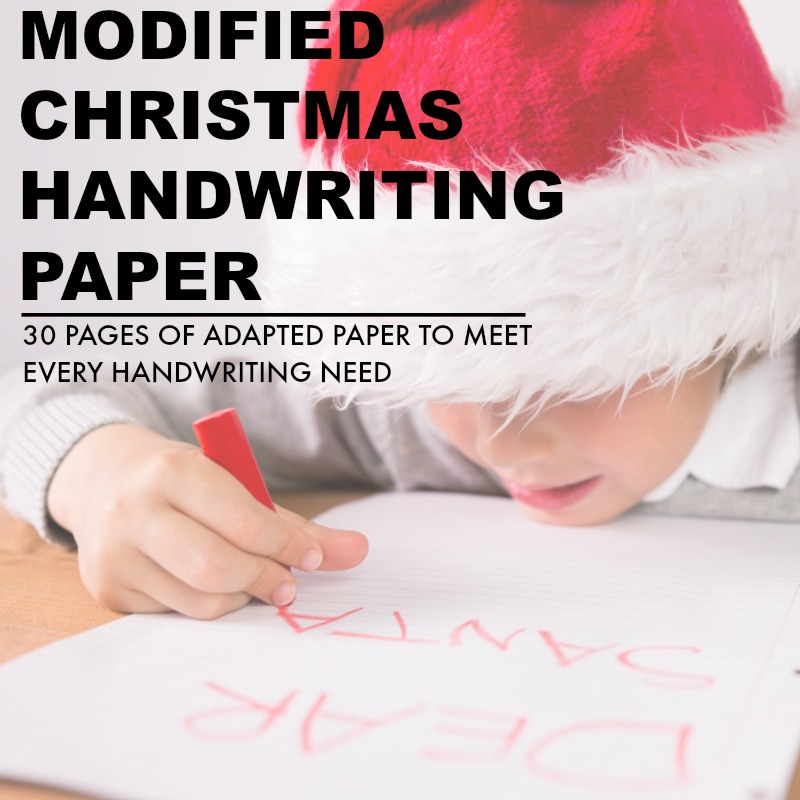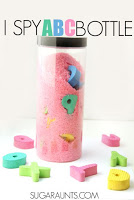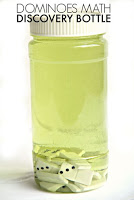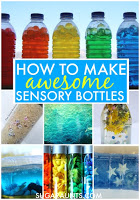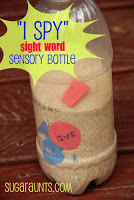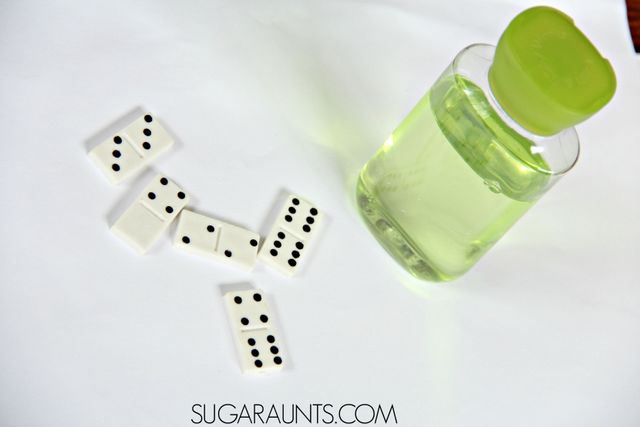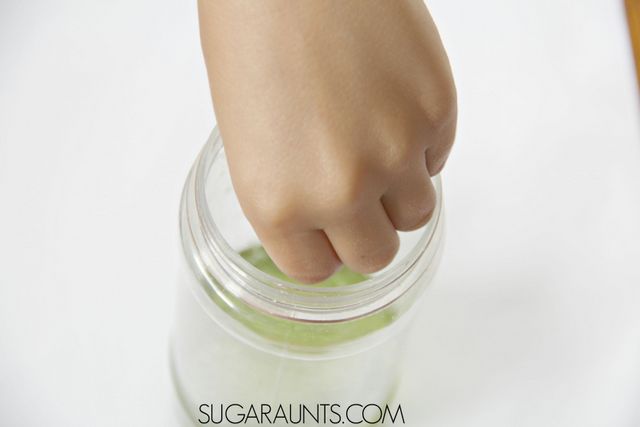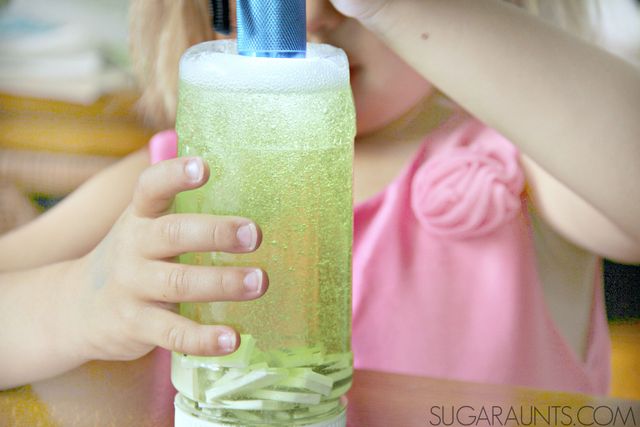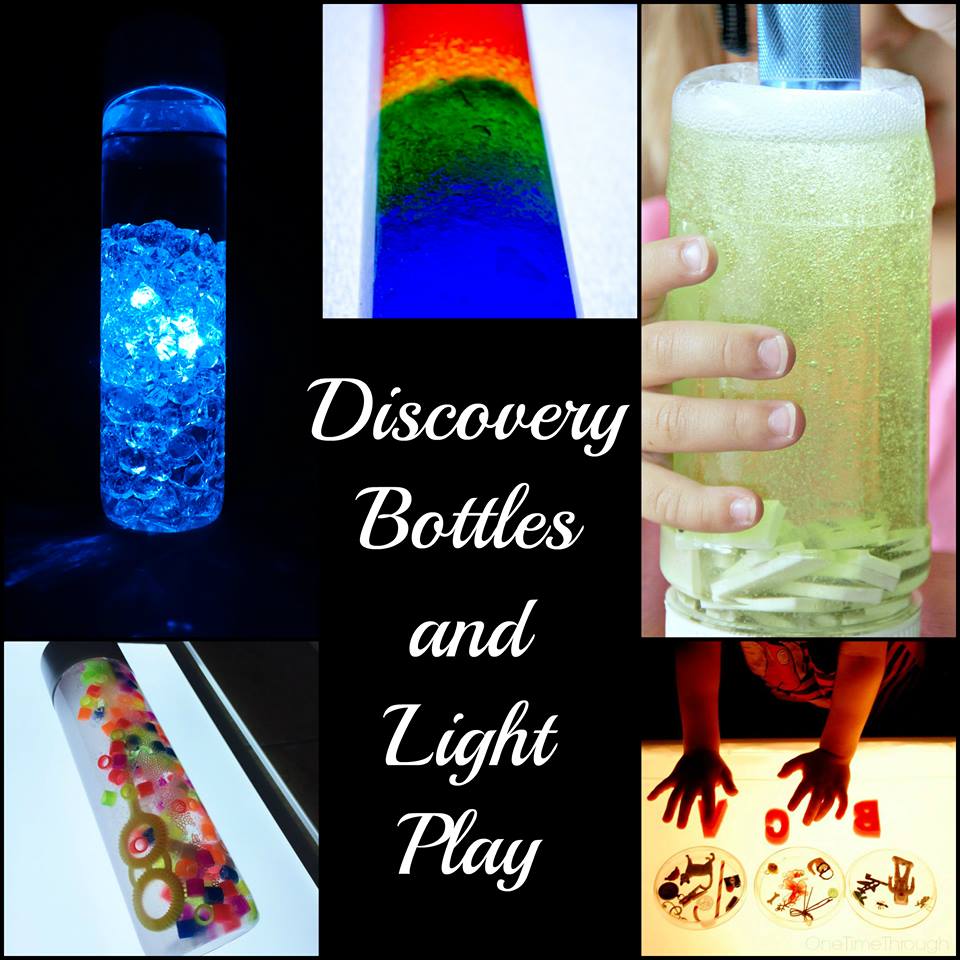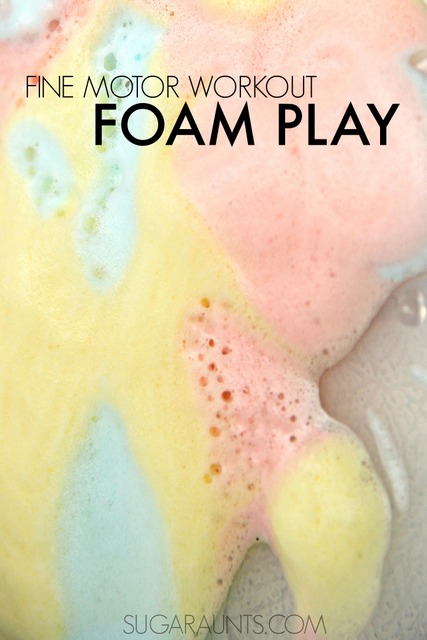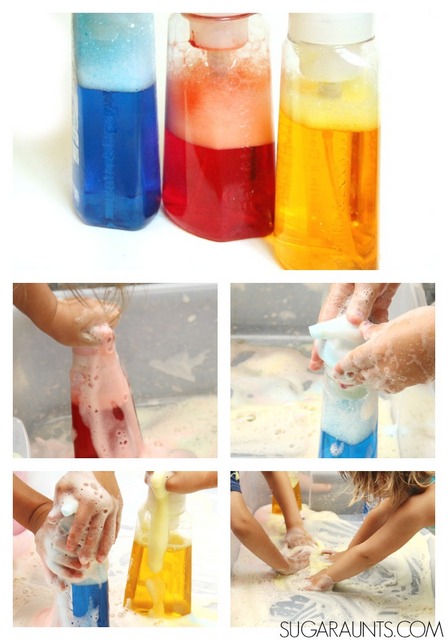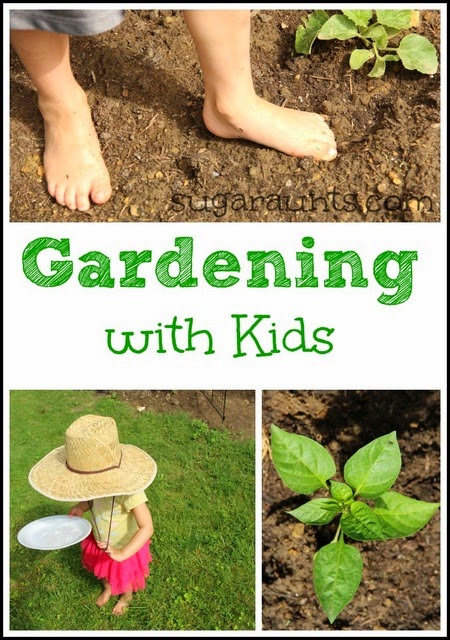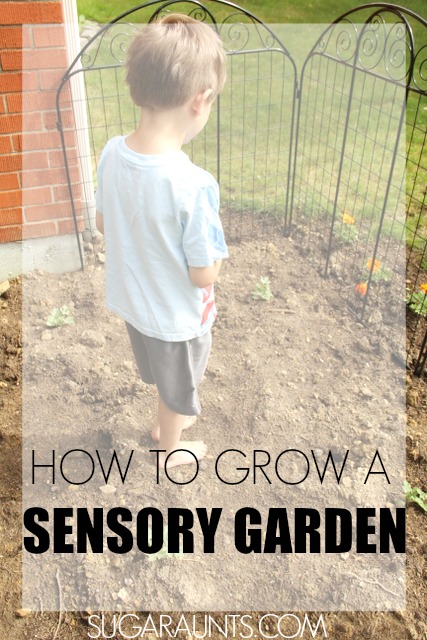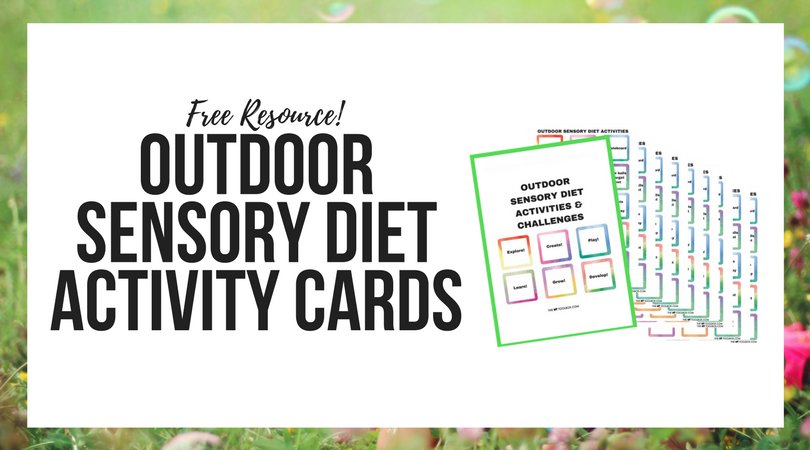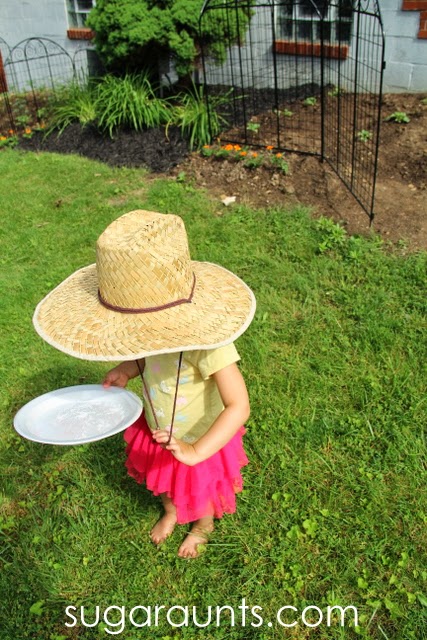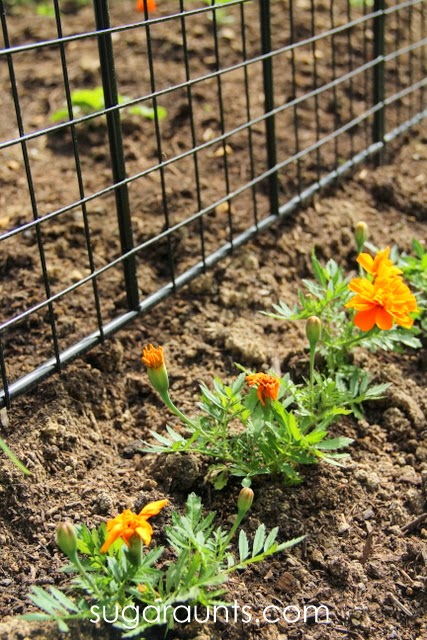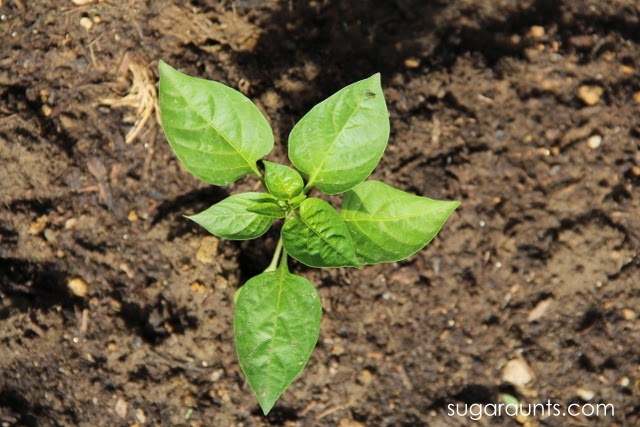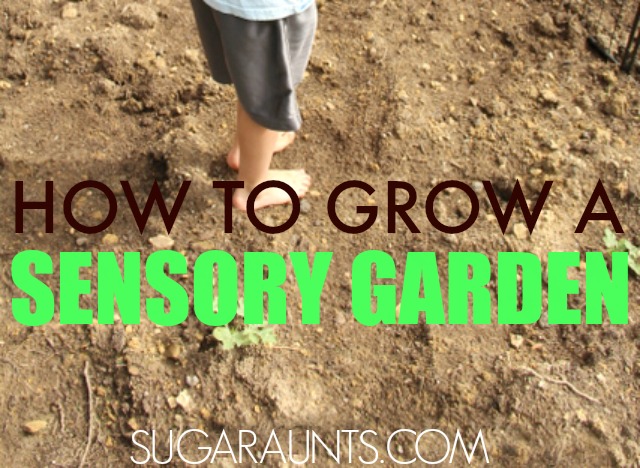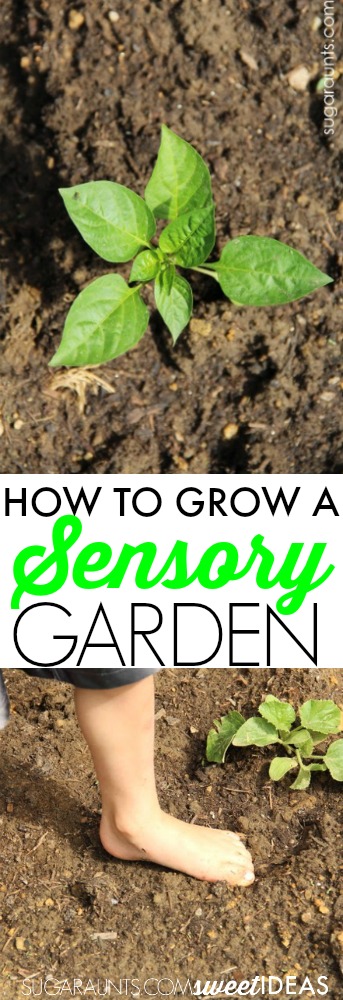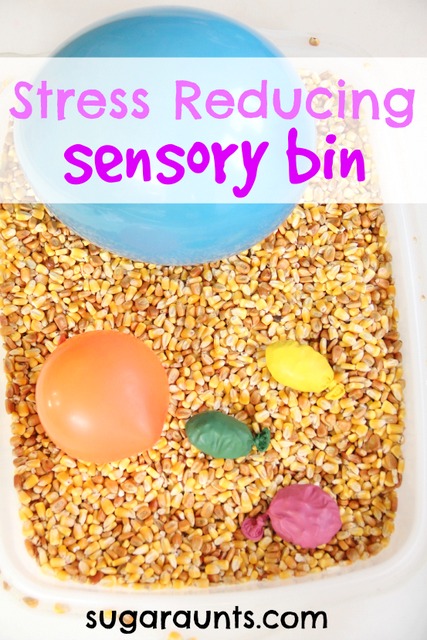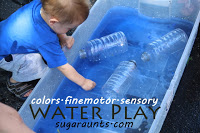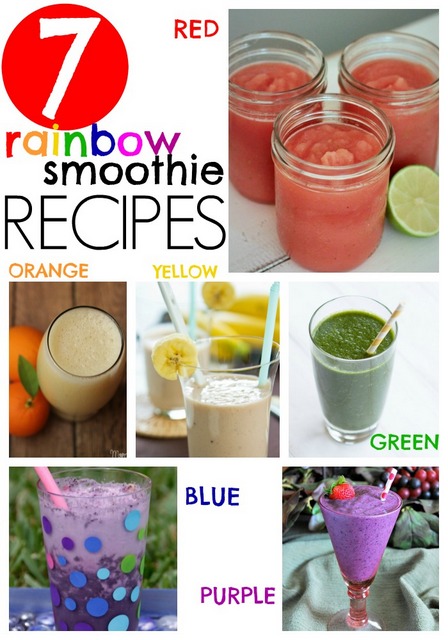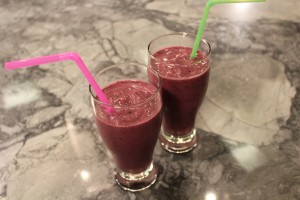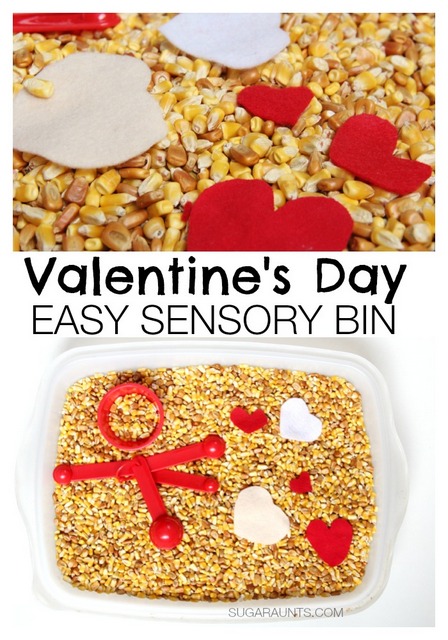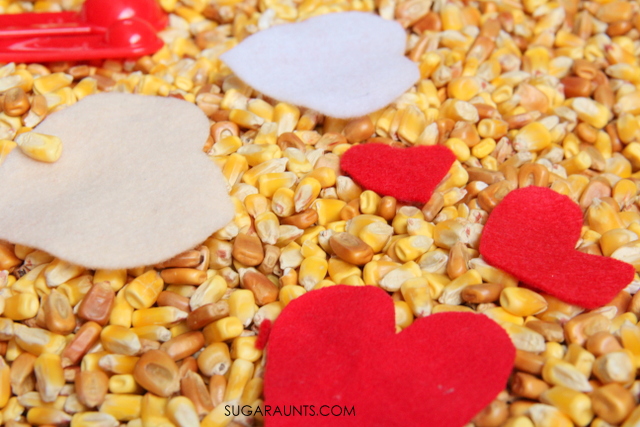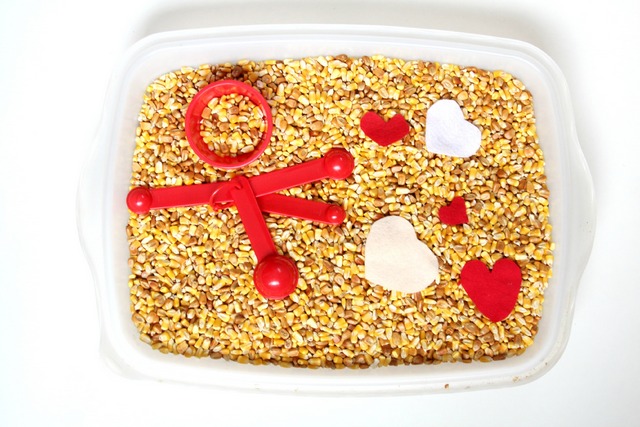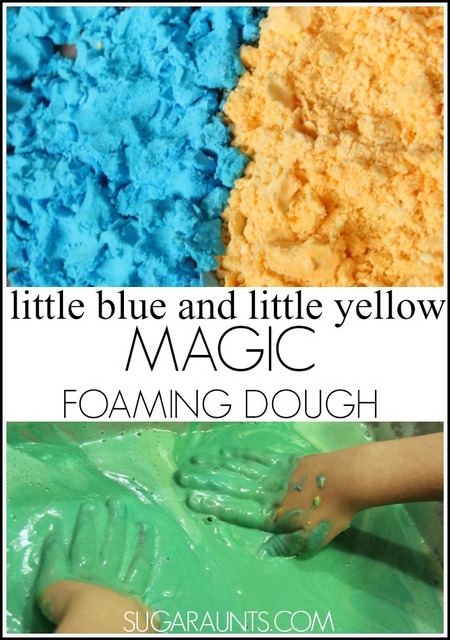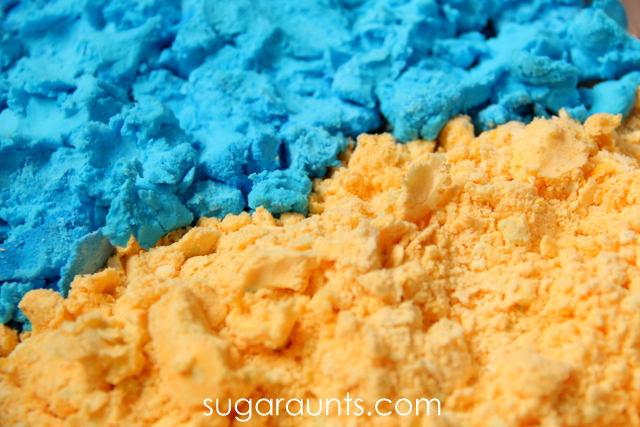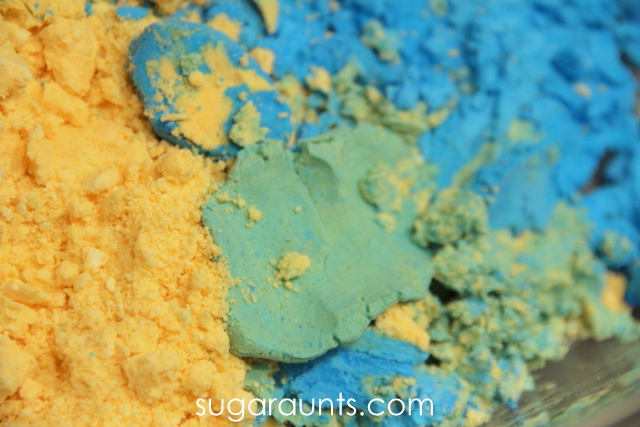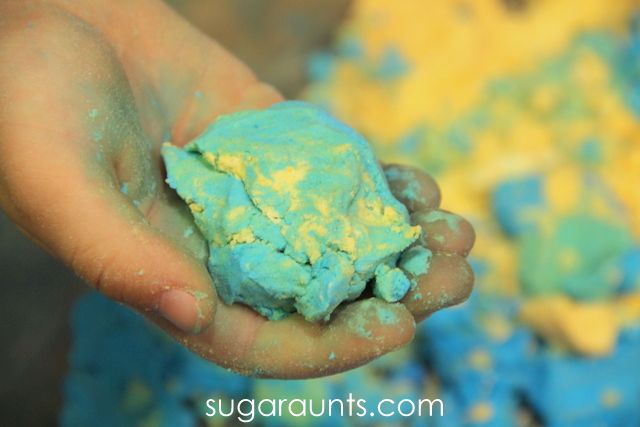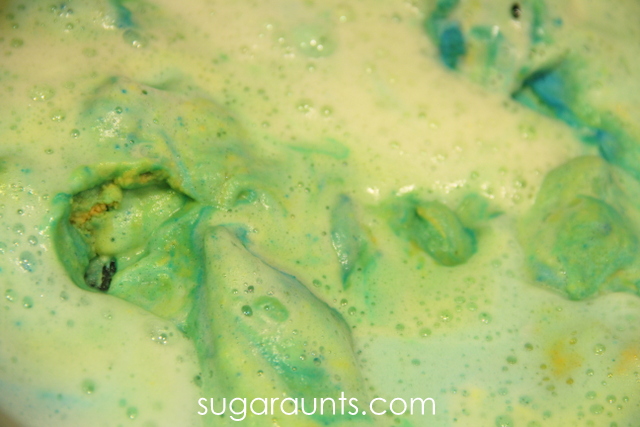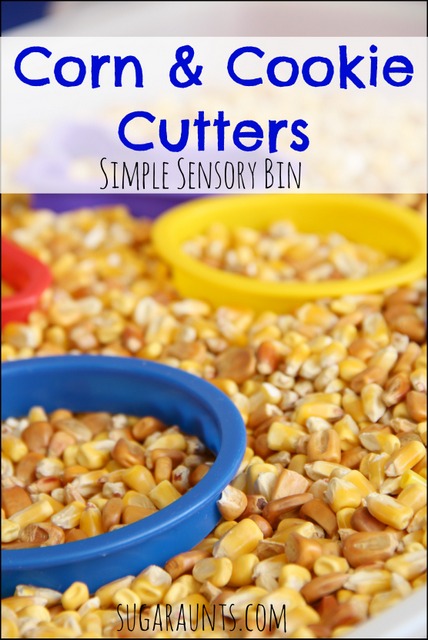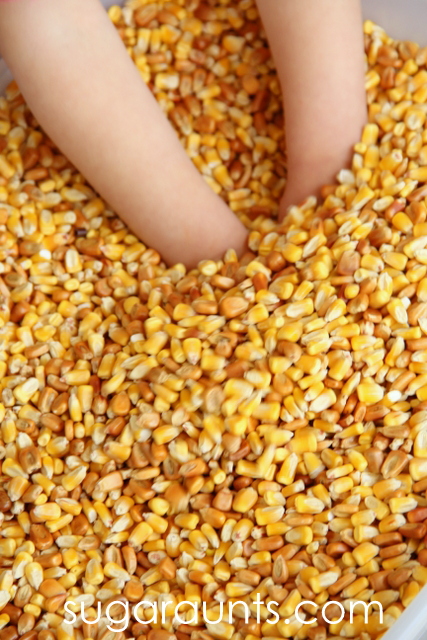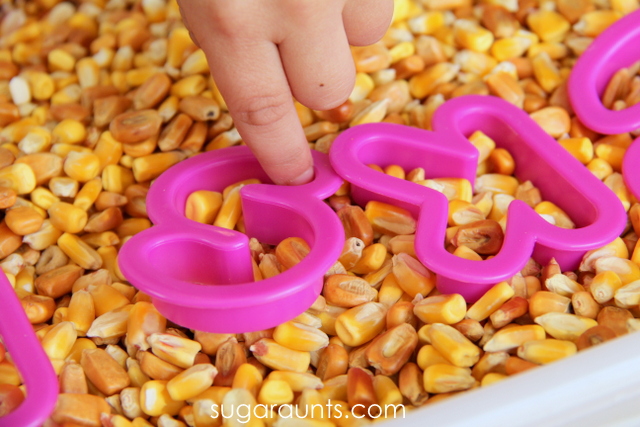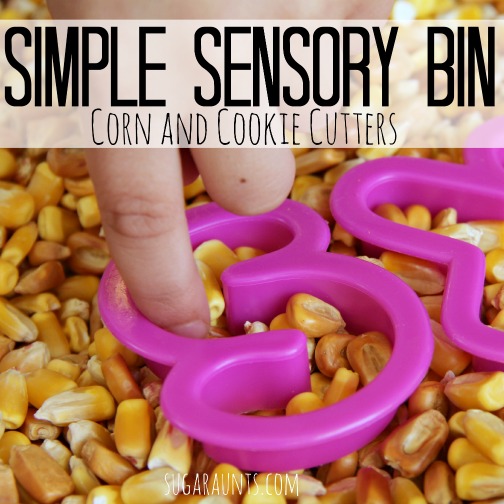This time of year, Moms need a backup plan.
A little tool that mom can pull out of a cupboard and hand over to a kiddo who needs a little bit of quiet time.
We all get overwhelmed by our environment. The constant input of stimulation from people, schedules, work requirements, holiday activities, holiday clutter, school and activities that keep going (but then add the additional celebration activities to the already full schedule…)
It can take a lot to keep it together for an adult who is managing the day’s requirements, let alone a child who doesn’t quite know what is happening next. Or why.
Sometimes a bit of a calm, slow, deep breath is in order. And it can come in the form of sensory integration, including a discovery bottle!
We made this Christmas themed discovery bottle very quickly and have been pulling it out every day since. A sensory bottle like this is calming, relaxing, and may be just the thing to settle the feeling of holiday overwhelm.
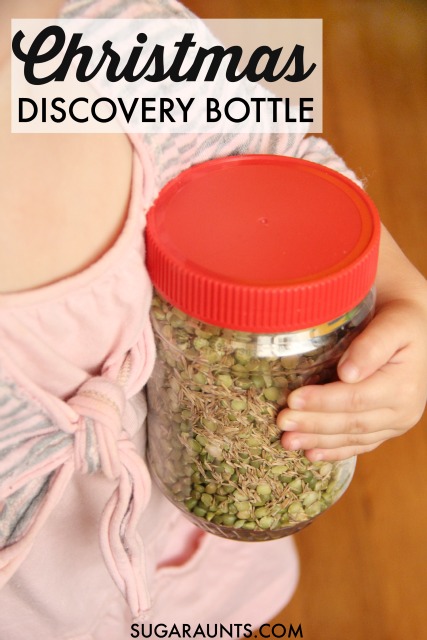
Christmas Shapes Discovery Bottle
Make a sensory discovery bottle to keep in your purse for overwhelmed shopper helpers or excited cookie baker assistants and have a backup plan on hand!
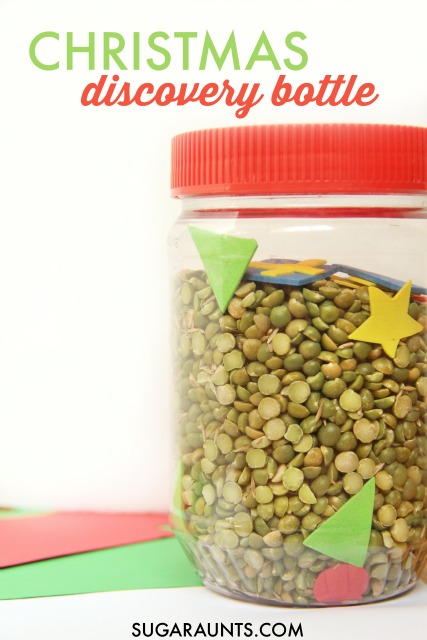

To make this Christmas Themed Discovery Bottle
You’ll need just a few materials to make a discovery bottle with a Christmas theme:
- Clear plastic jar (ours was a recycled peanut butter
jar, with a red lid to fit our Christmas theme!) - Green filler. We used Green Split Peas
and grass seed, but you could add green dyed rice, Green shredded paper) - Foam Craft Sheets
, cut into shapes. - Super Glue
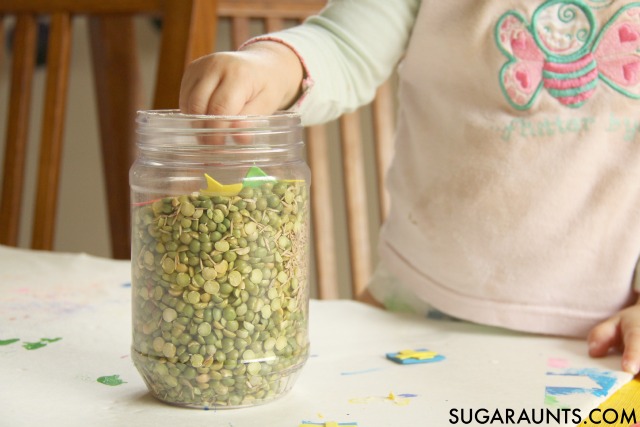

This sensory bottle was fun for my preschooler and toddler to prepare together. We scooped the split peas and grass seed into the bottle while they worked on fine motor skills with their scooping (I love giving them developmental training skills when they don’t even realize they are building skills!)
Cut up the Foam Craft Sheets
into basic shapes (More skill areas! This time, my daughter worked on her cutting skills, and is foam sheeting ever a great way to practice precision in learning to cut!)
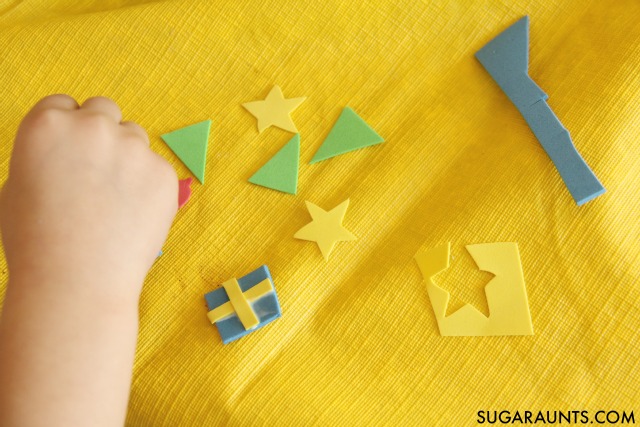

We made a circle that looked slightly like an ornament, a square that we turned into a present, a triangle (tree-ish looking thing?). Pop the foam shapes into the discovery bottle.
Screw the lid onto the bottle with a bit of glue. (The glue part is important for busy little hands! Use super glue to keep the lid in place.)
Proprioception with a Sensory Bottle
Now is the fun part! Hand over the discovery bottle and encourage your kiddo to shake, shake, shake! The proprioceptive input from a discovery bottle is calming heavy work and will provide a time of relaxing as they watch the falling peas or colored shapes.
READ MORE about Sensory Bottles HERE.
Shape Identification and I Spy Activity
- Ask them to name the shape.
- Name a shape and ask them to shake the bottle until they find that shape.
- Ask them to shake the bottle and name an object in the room that matches the shape they’ve found in the bottle. (This is a great activity to do while being carted around a grocery store or other busy shopping area!)
- Name an item in the environment or room and ask them to find the matching shape in the bottle.
- Work on colors and counting by asking them to find three red items in the bottle.
- Ask them to find an item in their environment that matches the color of the shape they’ve found in the bottle.
Christmas Handwriting Activities
Working on handwriting with kids this Christmas season? Grab your copy of the Christmas Modified Handwriting Packet. It’s got three types of adapted paper that kids can use to write letters to Santa, Thank You notes, holiday bucket lists and much more…all while working on handwriting skills in a motivating and fun way! Read more about the adapted Christmas Paper here.
